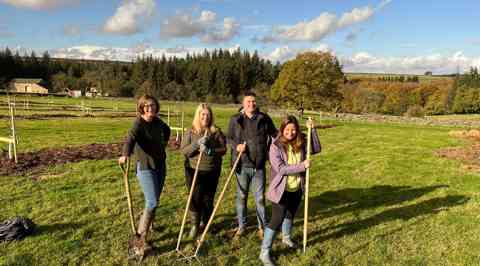Thanks to you-know-what, here in the events industry, we’ve seen weddings, conferences and parties across the UK grind to a halt as venues have been forced to close. Due to the risks associated with groups of people meeting and spreading the virus, it’s currently not safe or sensible for the majority of occasions to go ahead.
Yet some types of events carry an importance that hasn’t lessened during the pandemic. Training days, especially for those in professions such as the emergency services, construction and care, are more essential than ever, and need to be carried out to ensure safe and lawful standards of work.
Less critical but still a key concern is the huge number of training programmes in other industries that have been put on hold in the absence of face-to-face contact. Team building activities that strengthen colleague relationships and presentations that teach new skills are essential in keeping businesses performing at their best.
Yet all hope for employee training is not lost. In line with the huge boom in virtual events we’ve seen over the past few months, remote training has become a go-to resource for professionals across the UK.
Here are our top tips for training your team members during a pandemic:
Don’t just lecture
“Tell me and I forget. Teach me and I remember. Involve me and I learn.” - Benjamin Franklin.
If staff are just given a series of recorded presentations to watch, chances are that not much information will stick in their minds. To ensure that the training is as engaging and effective as possible, your team needs to interact with the activities and have the impetus for learning put on them.
The 70:20:10 learning method is a good starting point, where 70% of time is spent “learning by doing”, 20% sharing information with peers and 10% watching instructor videos. The “learning by doing” part is key, as it involves staff actually implementing the skills they’ve been taught in order to show how they’ll use them in their day-to-day role.
Mix up the media
Following on from the previous point, it’s important to change up the methods of learning for your employees to ensure they stay engaged and interested in the content. Having a flexible plan of podcasts, videos, workshops, articles, discussions and activities will keep brains stimulated and help your team to retain information.
Researcher Judy Willis explains: “The more regions of the brain that store data about a subject, the more interconnection there is...This cross-referencing of data means we have learned, rather than just memorised.” An innovative programme of content will also make employees more likely to enjoy the training and be more open to learning, rather than feeling like it’s something they just have to get done.
Encourage collaboration
Here at LVP we don’t think the most effective training comes from one person completing a list of tasks by themselves. There needs to be a sense of collaboration and support from fellow team members, and the swapping of ideas and solutions should be encouraged.
Either on the training platform or elsewhere, make sure that employees have a space to chat and share their thoughts on what they’ve been doing. This will boost creativity and brainpower and stop training fatigue from setting in. Create training activities that incorporate group discussion to provide constructive feedback and suggest improvements.

Monitor results
Before you share the training programme with your staff, it’s important to have a clear plan of how you will monitor their progress and results. Set out your expectations of what you want your team to achieve, and make sure to recognise and give praise when they meet their goals.
Most online training platforms can be set up to notify you when staff have completed an activity or watched a video, and individuals can have their own dashboard in which to view what they’ve completed. This can serve as both congratulations on what they’ve achieved, and motivation to continue.
Provide support
It’s not enough to provide your team with their login details for the training platform and leave them to it. Check in regularly to see how they’re getting on, and ask if they need clarification or extra help.
If you have any further resources that might improve their understanding or knowledge, share them. If you discover a gap in the training programme that leaves something unclear, create some content to explain it. The training shouldn’t be fixed, it should be always open to expansion and improvement in order to help your staff be their best.
Ensure ease of access
At this point in time, your team is not only juggling the likely new experience of working from home, but also the stress of the pandemic, not to mention possibly caring for children or elderly relatives, and everything else they’ve got going on. Adding training sessions to their plate shouldn’t cause them added worries, and the sessions should be within a flexible timeframe so employees can fit them around their existing schedule.
Another aspect to consider is the platform on which to provide the training. It should be quick and easy to access even for the less tech-savvy team members, and everything should be in one place to streamline the process. If possible, consider making the training programme mobile compatible so people can access it wherever and whenever.





